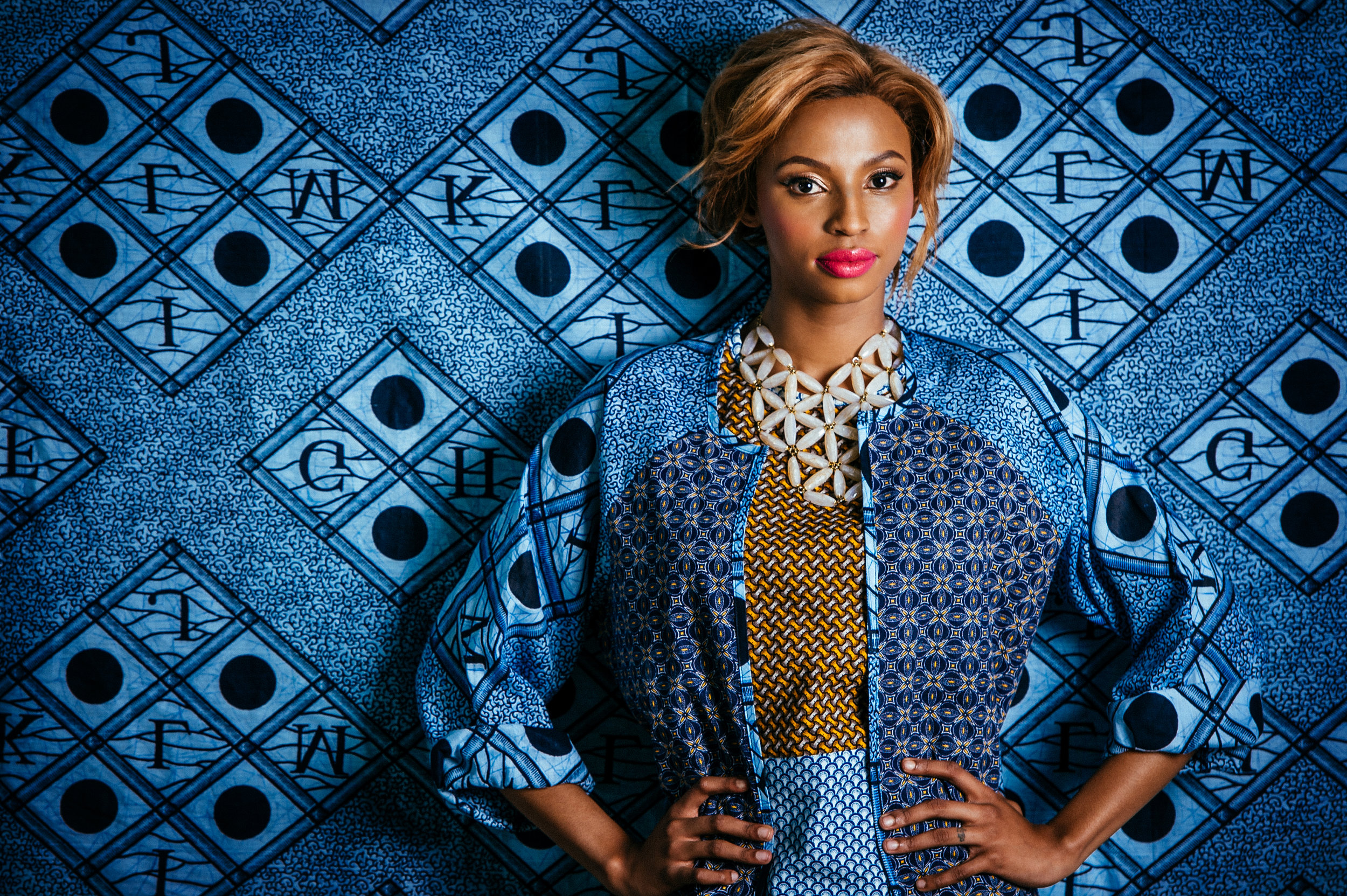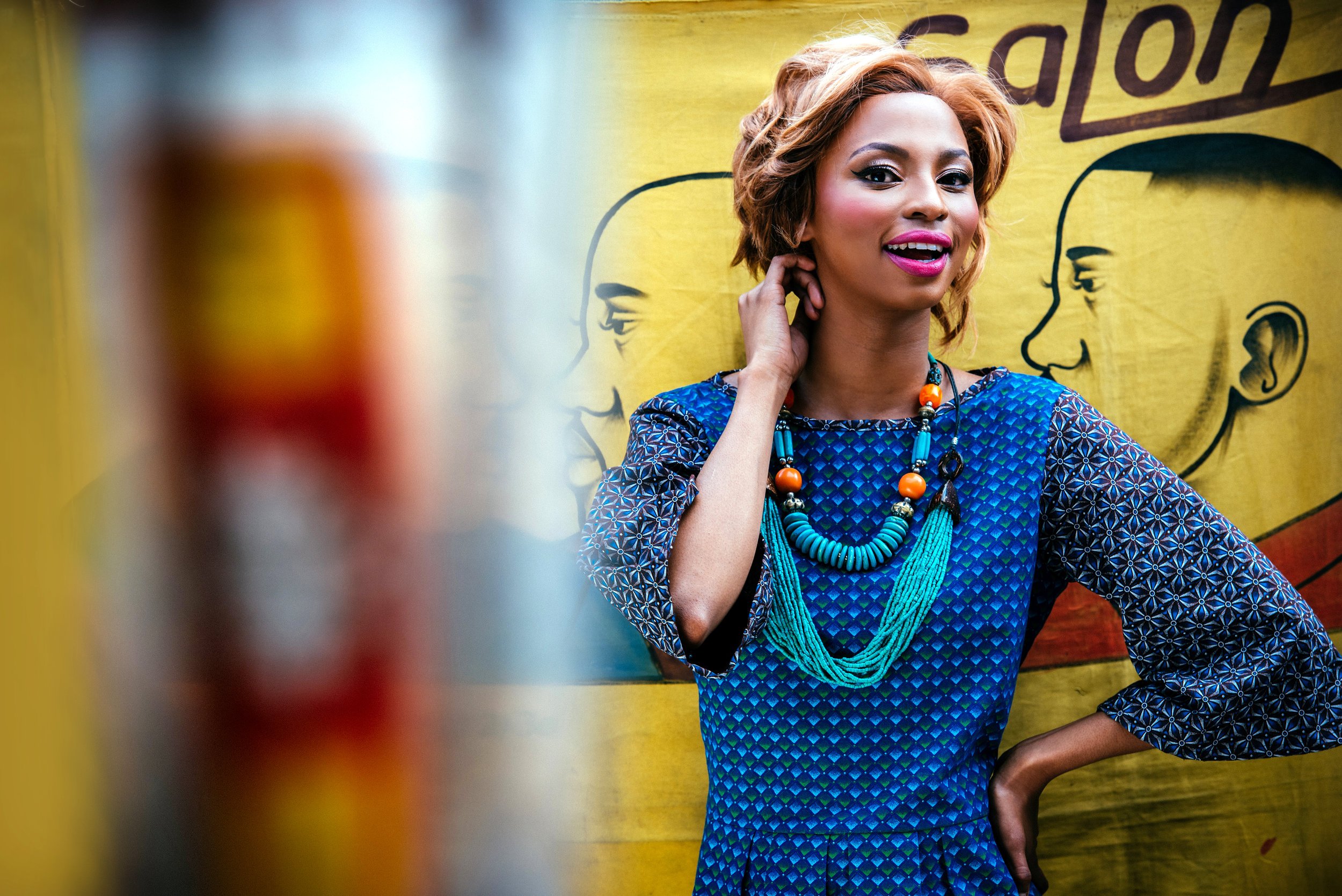SHWE: The Wearable Library is a South African fashion brand that encompasses the idea that knitting, crocheting, and sewing groups are typically social spheres for storytelling and learning. The bold colours and striking patterns seen in SHWE’s collections symbolically speak of the stories of the women in the city of Durban, the birthplace of the brand. SHWE believes in reiterating the stories behind the clothing we wear; a telltale of the real people who work hard and face challenges in the process of creating these consumer products. Thus, SHWE, the home of responsible clothes, manifests itself as a co-operative social project in which the maker plays as important of a role as the end consumers, crafting garments that give a voice to their stories. SHWE’s founder, Julia Pinheiro Franco, shares her secrets to her ever-motivating hunger for creativity along with her captivating entrepreneurial mindset and wisdom gathered throughout her varied, international career from local Brazil all the way to South Africa.
Words: Hanna-Amanda Pant
Image: SHWE ‘The Wearable Library’ / Jacki Bruniquel
Coming from such a cultural mix of experiences, how do you personally believe such a vibrant, international perspective has shaped the way you perceive the way people consume, as well as your brand identity as it stands today?
During my time working internationally and experiencing different parts of the fashion industry, I have come across a beautiful, contrasting variety of perspectives where disparity of opinion, ideology, culture and priorities were clearly evident not only in the work environment, but also amongst consumers as a whole. This has, over the years, helped me to tap into how people (mainly consumers) think and why. This, in turn, has assisted me in making informative and smart decisions when it comes to portraying our brand identity and what we stand for, without having to compromise on our core values.
At SHWE, we focus on multifunctional womenswear that caters for a variety of body types. We use traditional, locally sourced African fabric in the form of Shwe Shwe, and each garment is meticulously made by our wonderful team of women, most of whom have come from difficult backgrounds in the Durban area. Our garments are not only appealing to the eye, but we ensure that the process of making each item is meaningful and truly making a difference in the lives of these local women.
“South Africa has taught me to celebrate diversity, but also to use diversity as a means to create a sense of community.”
Let’s talk about your latest collection: what techniques have been incorporated in the making and who is the woman you imagine wearing it?
At Shwe, we focus on multifunctional pieces as one of our key brand components. This can be seen in our wrap dresses and wrap jumpsuits that can be tied in a variety of ways to suit the customer’s preference. Also, we have designed our range in such a way that the even seemingly the most contrasting of Shwe Shwe patterns work together seamlessly, allowing for freedom of personal expression. We want the women that wear our clothes to feel individually beautiful. Our two pieces also allow the slightly more shy customer, who still wants to wear her favourite pair of jeans or favourite top, to have that splash of colour and vibrance to add to her ensemble.
We use knitting, crocheting and sewing as our key techniques, but we do like to experiment from time to time with different handcrafting and sewing techniques, such as patchwork. The artistic, fun-loving, comfort driven woman of any shape and size who isn’t afraid to rock our contrasting prints is the most suited character to our brand.
Image: SHWE ‘The Wearable Library’ / Jacki Bruniquel
Sustainable fashion has also been perceived as an elitist approach to the basic need of covering our body not everyone can afford or gain access to. How can brands, such as SHWE, change that belief and bring durable fashion made with a kind cause closer to the very real end customer?
As the fashion industry as a whole is putting more and more emphasis on conscious consumerism, sustainable and ethical business practices, we, at Shwe, tap into that by highlighting that quality is better than quantity, and the hands that made your clothes are just as important as the end product. We aim to encourage our customers to view our garments as beautiful, quality pieces of love and community that they can keep for years to come rather than purely just a piece of disposable clothing.
Image: SHWE ‘The Wearable Library’ / Jacki Bruniquel
How has South Africa's beauty, that very real grasp of the people and beyond, seen from very close up shaped your latest collection for SHWE? Has the country changed the way you create in any particular way?
South Africa in all of its diversity has been one of the most positively life altering experiences of my journey, both personally and professionally. Although there are a range of different, yet equally rich cultures, the sense of community across all people, from different walks of life is amazing. Here you see daily struggles and life for the locals can be exceptionally tough, but you also witness people helping each other and working together to make life a little easier every day. At Shwe, we aim to bring this mindset into our daily work practices. Myself and my designer, Simone, work closely with our team of women, not only with the aim to produce a quality product, but also to share stories and learn about each other on a personal level. This diversity of culture is evident in our garments, manifesting in our colourful variety of contrasting patterns in the traditional African Shwe Shwe fabric. South Africa has taught me to celebrate diversity, but also to use diversity as a means to create a sense of community.
What is probably the best thing you have learned working with the locals making the garments? What are they personally gaining from your initiative? Is there anything you have had to unlearn during your journey of working with the women?
We collaborate with different groups of women. The first one, The Association for the Aged (TAFTA), uses their tacit (life-learned) handcrafting skills to knit and crochet garment parts, such as the sleeves and backs of jackets. Beyond an income, they gain a purpose. We employ and upskill other local women and refugees, so that they can earn a living and support their families. These women sew the garments for Shwe.
The best thing I’ve learned about working with the locals is that mutual respect is so important and differences allow for a richer perspective that has helped me to judge less and love more. I have had to unlearn the idea that everyone works at the same pace, and learn that people work differently and think differently. We place great importance on good quality garments and a happy team.
“We aim to encourage our customers to view our garments as beautiful, quality pieces of love and community that they can keep for years to come rather than purely just a piece of disposable clothing.”
Image: SHWE ‘The Wearable Library’ / Jacki Bruniquel
What is that one inspiring final message you’d like to pass on to the readers concerning the current cultural climate and the fashion industry? What do we still need to work on to perhaps make responsible fashion more visible and accessible?
We, in the fashion, advertising and branding industries, including other creative industries alike, are hugely influential over the way people consume. We have the power to be agents for positive change. We need to encourage ethical and sustainable buying practices and educate people on the fact that less is more, and humanity, as well as quality, need to take preference over quantity.





